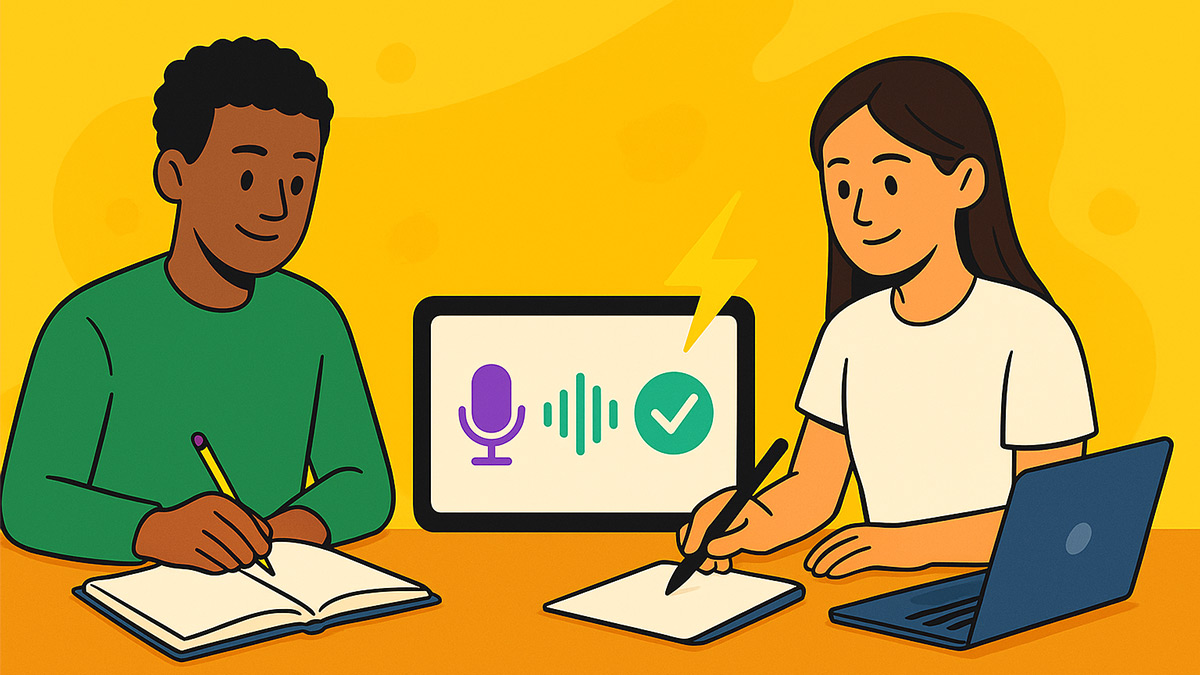Convert lecture audio or captions into tidy, clean notes inside ChatGPT in 2025. Upload audio, paste Zoom/YouTube captions, or record directly, then run the prompt below to get headings, key terms, practice questions, and a flashcards CSV—in about 10 minutes. See ChatGPT’s feature overview, file uploads, voice dictation, and record mode for capabilities and limits.
At a glance
- Input: Phone/laptop recording, YouTube auto-captions/downloadable subtitles, or Zoom automated captions/cloud transcripts.
- Process: Upload to ChatGPT → transcribe/clean → structure by H2/H3 → extract key terms.
- Output: One-page summary, 6 Q&A practice, and two-column CSV for flashcards.
- Where: ChatGPT (upload files • dictate • record).
Before you start
- Turn on accurate captions: YouTube • Zoom. Download subtitles if needed: YouTube “Download subtitles”.
- Slides? Export PPT to PDF for clearer sectioning.
- Name files clearly:
Course_Week##_Topic. - Know what’s stored: ChatGPT file retention & limits. Follow your syllabus policy.
The 10-minute workflow in ChatGPT
- 0–2 min: Open ChatGPT. Click + to upload audio or captions. Or start voice dictation/record mode.
- 2–4 min: Paste the prompt below to clean and structure the transcript.
- 4–6 min: Ask for a one-page study guide with key takeaways and definitions.
- 6–8 min: Ask for 6 practice Q&A and a two-column “term,definition” CSV.
- 8–10 min: Copy results to Google Docs → Save as PDF. Share with your group.
Copy-paste prompt for ChatGPT
Clean and convert this lecture into study-ready notes: 1) Fix casing, punctuation, and remove filler words. Keep speaker meaning. 2) Segment into H2/H3 with short summaries per section. 3) Extract a glossary (10–20 key terms: term — concise definition). 4) Produce a one-page study guide: TL;DR, 5–7 takeaways, 5 concept-map bullets. 5) Generate 6 practice Q&A (mix of recall and application) with answers. 6) Output a CSV (two columns: term,definition) for flashcards. Quote fields that contain commas. 7) Return: - “Notes (H2/H3)” - “Glossary” - “One-page guide” - “Practice Q&A” - “Flashcards CSV” (in a code block)
Step-by-step: convert lecture audio to notes in ChatGPT
1) Capture — Record clearly or rely on platform captions. See Zoom caption controls and YouTube caption setup.
2) Upload — In ChatGPT, upload audio or subtitle files (.vtt/.srt). Or paste the transcript text.
3) Clean & structure — Run the prompt to remove filler, fix casing, and group ideas under H2/H3 with timestamps if present.
4) Extract key terms — Ask ChatGPT to compile a glossary of core terms with short, test-ready definitions.
5) One-page guide — Ask for a TL;DR, takeaways, and a compact concept map for pre-exam refreshers.
6) Practice & flashcards — Request 6 Q&A with answers and a two-column CSV. Import to Anki/Quizlet. If needed, see Anki CSV rules (UTF-8).
7) Export & share — Move final notes to Google Docs → Save as PDF. Keep original caption files for quick fixes later.
Template: capture checklist
- Mic close to speaker • quick 10-sec test clip
- Enable platform captions (Zoom • YouTube)
- Export slides to PDF
- Consistent filenames: course • week • topic
Troubleshooting
- Noisy audio: Prefer platform captions (Zoom cloud transcript • YouTube download subtitles).
- Messy headings: Include slide PDF to guide sectioning.
- Very long lectures: Process in 20–30 minute chunks, then merge in Docs.
- Flashcards import errors: Ensure CSV is UTF-8 and two columns (Anki CSV spec).
Responsible use
Use AI as a study aid. Follow your school’s policy. Review accuracy against instructor materials. Know ChatGPT’s file retention details before uploading class content.
FAQs
Can I do the entire workflow in ChatGPT?
Yes. Upload files, dictate or record, then use the prompt to generate cleaned notes, a one-page guide, practice Q&A, and a flashcards CSV. See ChatGPT’s File Uploads FAQ and Voice Dictation FAQ for details.
What if the lecture is very long?
Process in 20–30 minute chunks. Paste each result into the same Google Doc and export to PDF at the end.
Will it work with accents or fast speech?
Captions from YouTube/Zoom often outperform raw audio. Import those subtitle files when available for better accuracy.
How do I handle equations and diagrams?
Upload slide PDFs so headings line up. For complex figures, add screenshots in your Doc after ChatGPT produces the text notes.
How do I import the CSV into flashcard apps?
Anki: File → Import (CSV, UTF-8). Quizlet: Create → Flashcard set → Import, then paste your two-column CSV.
Next: Prefer a one-click flow? Try our Lecture → Notes or generate a Study Guide from cleaned text.



